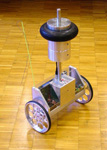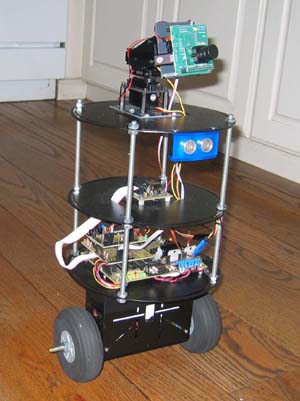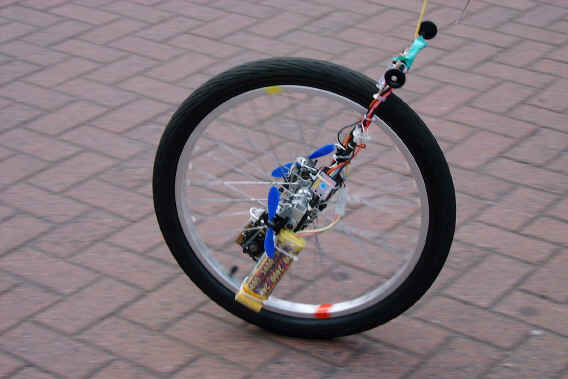Most balancing robots reflect an inverted pendulum design. By moving its center of gravity higher the wheels are able to create more effective torque. This effect can be demonstrated by balancing an upside down broom in your hand then turning the broom over and trying to balance the broom handle side up. A good example of the inverted pendulum design is the French robot named Joe shown on the right. Joe is a radio-controlled robot that is particularly adept over non-level terrain.
Two-wheel balancing robots have a particular advantage over robots with three or more wheels. If the center of gravity gets over either the front or back wheels, the robot risks toppling over end.


